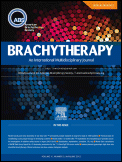
Brachytherapy
Scope & Guideline
Leading the Charge in Cancer Treatment Innovations.
Introduction
Aims and Scopes
- Clinical Outcomes and Efficacy:
Research often centers on evaluating the clinical outcomes of various brachytherapy techniques across different cancer types, including prostate, cervical, and head and neck cancers. - Dosimetry and Treatment Planning:
A significant focus is placed on dosimetric studies, including the development and validation of treatment planning methodologies and tools that improve the precision of brachytherapy delivery. - Technological Innovations:
The journal highlights advancements in brachytherapy technology, such as the use of 3D printing for applicators, image-guided techniques, and the integration of artificial intelligence in treatment planning. - Safety and Complications:
There is a consistent emphasis on understanding the safety profiles of brachytherapy, including studies on complications, side effects, and strategies for minimizing toxicity. - Training and Education:
The journal also addresses the importance of education and training for healthcare professionals in the field of brachytherapy, focusing on improving competency and patient care.
Trending and Emerging
- Integration of Artificial Intelligence:
Recent studies are increasingly exploring the application of artificial intelligence in treatment planning and dosimetry, which promises to enhance precision and efficiency in brachytherapy. - Personalized Treatment Approaches:
There is a growing emphasis on tailoring brachytherapy techniques to individual patient characteristics and tumor biology, moving towards more personalized medicine. - Multimodality Treatment Strategies:
Research is trending towards the combination of brachytherapy with other treatment modalities, such as immunotherapy and targeted therapies, to improve overall treatment outcomes. - Advancements in Imaging Techniques:
The use of advanced imaging technologies, including MRI and CT, for guiding brachytherapy procedures is on the rise, improving the accuracy of dose delivery and treatment planning. - Focus on Patient-Reported Outcomes:
Emerging themes include the assessment of patient-reported outcomes and quality of life measures following brachytherapy, highlighting the importance of patient-centered care in oncology.
Declining or Waning
- Traditional Techniques:
There has been a noticeable decline in research focused solely on traditional brachytherapy techniques without innovative enhancements or updates, as the field increasingly moves towards more advanced and hybrid methodologies. - Non-Image Guided Approaches:
With the rise of image-guided brachytherapy (IGBT), studies that do not incorporate imaging techniques for treatment delivery are becoming less common, indicating a shift towards more precise and personalized treatment planning. - Single Modality Studies:
Research focusing exclusively on brachytherapy as a standalone treatment without consideration of multimodal approaches (e.g., combining external beam radiation with brachytherapy) is waning, reflecting a trend towards integrated treatment strategies.
Similar Journals

EUROPEAN JOURNAL OF NUCLEAR MEDICINE AND MOLECULAR IMAGING
Connecting Researchers to Transformative Medical InsightsThe European Journal of Nuclear Medicine and Molecular Imaging is a prestigious, peer-reviewed journal published by Springer, dedicated to advancing the field of nuclear medicine and molecular imaging. With an impressive impact factor and ranked in the Q1 category for both Medicine and Radiology, Nuclear Medicine and Imaging, this journal is a pivotal platform for researchers and practitioners to disseminate significant findings from 1996 to the present, reflecting the evolution of the field. The journal boasts a notable Scopus rank, standing at #8 out of 333 in its category, placing it in the top 3% of published works, which highlights its critical importance in shaping contemporary practices and research innovations. Although it does not offer an open-access model, the journal provides various access options to ensure that important research is accessible to professionals, students, and academics alike. Through rigorous peer review and a commitment to high-quality publication, the European Journal of Nuclear Medicine and Molecular Imaging plays an essential role in the advancement of nuclear medicine, contributing to better diagnostic and therapeutic outcomes globally.
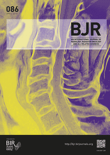
BRITISH JOURNAL OF RADIOLOGY
Transforming Clinical Insights with Cutting-Edge ResearchBritish Journal of Radiology is a leading peer-reviewed journal published by the British Institute of Radiology, dedicated to advancing the field of radiology, nuclear medicine, and imaging. With a prestigious history dating back to 1945, this journal is at the forefront of disseminating cutting-edge research and innovations that significantly impact clinical practice. Currently enjoying a Q1 ranking in the field of radiology and Q2 in general medicine for 2023, it is recognized for its rigorous standards and high-quality content, ranking #87 out of 333 in Scopus for specialties related to Medicine, Radiology, Nuclear Medicine, and Imaging, placing it in the 74th percentile. Researchers, professionals, and students are encouraged to engage with the latest findings and comprehensive reviews presented within its pages, which contribute not only to academic discourse but also to the evolution of practice in the wider medical community.

Radiological Physics and Technology
Exploring the intersection of medicine and physics.Radiological Physics and Technology, published by SPRINGER JAPAN KK, is a prominent journal that serves as a crucial resource in the multidisciplinary fields of medicine and radiation sciences. With an ISSN of 1865-0333 and an E-ISSN of 1865-0341, the journal has been converging impactful research from 2008 to 2024. It holds a commendable position in academic rankings, currently classified in Q2 in Physical Therapy, Sports Therapy and Rehabilitation and Radiation, along with Q3 for Medicine (miscellaneous) and Radiology, Nuclear Medicine and Imaging. The journal is well-regarded in the academic community, reflected in its Scopus rankings that place it in the upper tiers of its respective categories. Although it currently does not offer Open Access, Radiological Physics and Technology remains a pivotal publication for researchers, academics, and practitioners seeking to advance knowledge and foster innovation in radiological science. Its commitment to disseminating high-quality research ensures its continued relevance and importance within these fields.

Advances in Radiation Oncology
Empowering Oncology through Open Access InsightsAdvances in Radiation Oncology, published by Elsevier Inc, is a premier international journal dedicated to the field of oncology and radiology, focusing on the latest groundbreaking research and innovations in radiation therapy. Launched as an Open Access journal in 2016, it has since carved out a significant niche in the academic community, featuring contributions that span a diverse range of topics including clinical practices, technologies, and outcomes in radiation oncology. With an impressive Q2 rankingOncology and Radiology, Nuclear Medicine and Imaging categories for 2023, and positioned within the 65th and 55th percentiles of Scopus ranks, it serves as an essential resource for researchers, medical professionals, and students alike. The journal not only emphasizes the importance of disseminating knowledge widely through its open access model but also aims to foster collaboration and innovation in the evolving landscape of cancer treatment. For those looking to stay at the forefront of radiotherapy research and advancements, Advances in Radiation Oncology is an invaluable platform for scholarly communication.
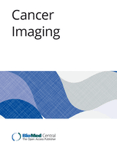
CANCER IMAGING
Elevating Cancer Research with Open Access Imaging SolutionsCANCER IMAGING, published by BMC, stands as a leading open-access journal in the realms of oncology and medical imaging, significantly contributing to the advancement of cancer research since its inception in 2000. With an impressive impact across multiple domains—most notably ranking Q1 in prestigious categories such as Medicine (miscellaneous), Oncology, and Radiology—this journal ensures high visibility and influence within the academic community. As of 2023, it is recognized in various Scopus rankings, securing top positions in the fields of Radiology, Nuclear Medicine, and Imaging, alongside Radiological and Ultrasound Technology. The journal's commitment to open-access publication, adopted in 2014, enhances accessibility for researchers, healthcare professionals, and students alike, fostering an inclusive environment for sharing critical advancements and innovative methodologies in cancer imaging. Set in the vibrant landscape of the United Kingdom, CANCER IMAGING continues to play a vital role in elucidating the complexities of cancer diagnostics and treatment, establishing itself as an essential resource for those pursuing excellence in cancer care and research.
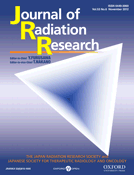
JOURNAL OF RADIATION RESEARCH
Leading the charge in open-access radiation science.JOURNAL OF RADIATION RESEARCH, published by Oxford University Press, is a prominent peer-reviewed journal focusing on the diverse fields of radiation science, including health, toxicology, and radiology. Since its inception in 1960, this open-access journal has provided a critical platform for the dissemination of high-quality research, making it accessible to a global audience of researchers, professionals, and students. With a consistent track record, the journal holds an impressive impact factor and is categorized in Q2 of Radiation studies and Q3 in Health and Toxicology as per the 2023 rankings, reflecting its influential role in shaping contemporary discourse in the field. The journal also boasts notable rankings within Scopus, further underscoring its importance in advancing knowledge and innovations related to radiation. Spanning from 1960 to 2024, the JOURNAL OF RADIATION RESEARCH remains at the forefront of scientific exploration and is essential reading for anyone committed to advancing the understanding of radiation and its effects.

Journal of Medical Imaging and Radiation Sciences
Transforming healthcare through cutting-edge imaging studies.Journal of Medical Imaging and Radiation Sciences, published by Elsevier Science Inc, is a prominent platform dedicated to advancing research and knowledge in the field of medical imaging and radiation sciences. With an ISSN of 1939-8654, this journal plays a crucial role in disseminating innovative studies and insights from 2008 to 2024, providing a valuable resource for researchers, professionals, and students alike. It is positioned within the Q3 quartile in both the categories of Radiological and Ultrasound Technology and Radiology, Nuclear Medicine and Imaging, indicating its growing influence and contributions to these critical areas of healthcare. While it currently does not offer open access, authors benefit from the journal's rigorous peer-review process, ensuring high-quality publications. As the landscape of medical imaging continues to evolve, the Journal of Medical Imaging and Radiation Sciences stands out for its commitment to education and innovation, inviting contributions that explore the latest technological advancements and clinical applications.

Journal of Contemporary Brachytherapy
Elevating cancer treatment standards with contemporary research and practices.Journal of Contemporary Brachytherapy, published by TERMEDIA PUBLISHING HOUSE LTD, is a distinguished open-access journal dedicated to advancing the field of brachytherapy within the oncology and radiology domains. Since its inception in 2009, the journal has provided a platform for researchers, clinicians, and students to share innovative findings, cutting-edge techniques, and clinical experiences, contributing significantly to evidence-based practices in cancer treatment. With an ISSN of 1689-832X and E-ISSN 2081-2841, the journal has established its presence globally, and it is indexed in Scopus, achieving a commendable standing among its peers—with rankings of #196 in Radiology, Nuclear Medicine, and Imaging and #260 in Oncology for 2023. Notably, it holds a Q3 quartile classification, reflecting its emerging influence in these critical fields. The journal is committed to open science, ensuring that research is accessible to a wide audience, which is particularly vital for the ongoing development of methodologies and the implementation of best practices in brachytherapy. Exploring topics from the technical aspects of brachytherapy procedures to patient management strategies, the Journal of Contemporary Brachytherapy is an essential resource for those looking to stay at the forefront of oncological advancements.
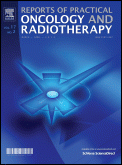
Reports of Practical Oncology and Radiotherapy
Championing transparency in cancer research dissemination.Reports of Practical Oncology and Radiotherapy is a distinguished open-access journal dedicated to advancing the fields of oncology, radiotherapy, and cancer research. Published by VIA MEDICA since 2001, this journal serves as a critical platform for disseminating innovative research and practical findings that impact clinical practices and patient outcomes. With an emphasis on fostering collaboration and knowledge exchange among researchers, clinicians, and students, the journal has positioned itself within the Q3 and Q4 categories of renowned directories in oncology, radiology, and nuclear medicine as of 2023. Based in Gdansk, Poland, it provides unrestricted access to its articles, ensuring that crucial research reaches a wide audience. This dedication to open access reflects the journal's commitment to transparency and innovation in the fight against cancer, making it an invaluable resource in this vital field of study.

Translational Cancer Research
Pioneering new frontiers in translational oncology.Translational Cancer Research, published by AME Publishing Company in Hong Kong, is a pivotal journal aimed at fostering the advancement of oncology-related knowledge through the dissemination of high-quality research findings. With its ISSN 2218-676X and E-ISSN 2219-6803, this journal serves as a vital resource for researchers, professionals, and students in the fields of Cancer Research, Oncology, and Radiology, Nuclear Medicine, and Imaging. Established in 2012, the journal covers the latest breakthroughs and cross-disciplinary approaches that drive innovation in cancer treatment and diagnostics. Although currently classified in the Q4 Quartile for Cancer Research and Q3 for both Oncology and Radiology, Translational Cancer Research continuously works toward improving its academic influence and impact, evidenced by its ongoing research contributions. The journal emphasizes open access, making crucial research available to a global audience. We invite scholars and industry professionals to engage with the latest findings and discussions within these critical areas of medical science.